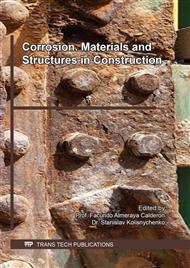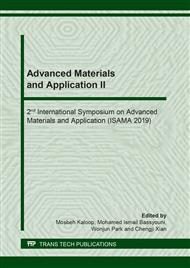p.76
p.82
p.88
p.94
p.100
p.109
p.116
p.122
p.128
Corrosion Behaviors of Reinforcing Steel in Concrete with Various Moisture Contents
Abstract:
Moisture contents of concrete can affect the corrosion of reinforcing steel. In this paper, moisture contents of concrete were increased by filling the small holes with water or fully submerging in water. The effect of moisture contents on the corrosion behaviors of cathodic and anodic steel was investigated by comparing the half-cell potential, micro-cell and macro-cell current density. The results indicated that when only the concrete around cathodic steel was in water-saturated state, it could greatly weakened the kinetics of cathodic reaction and resulted in a considerable decrease in macro-cell current. When only the concrete around anodic steel was in water-saturated state, it could not effectively inhibit the macro-cell corrosion. When both the concrete around the cathodic steel and the anodic steel were in water-saturated state, the macro-cell current flowing between cathode and anode could be inhibited effectively, and the corrosion was little affected by chloride contents.
Info:
Periodical:
Pages:
100-105
Citation:
Online since:
June 2019
Authors:
Price:
Сopyright:
© 2019 Trans Tech Publications Ltd. All Rights Reserved
Share:
Citation:



